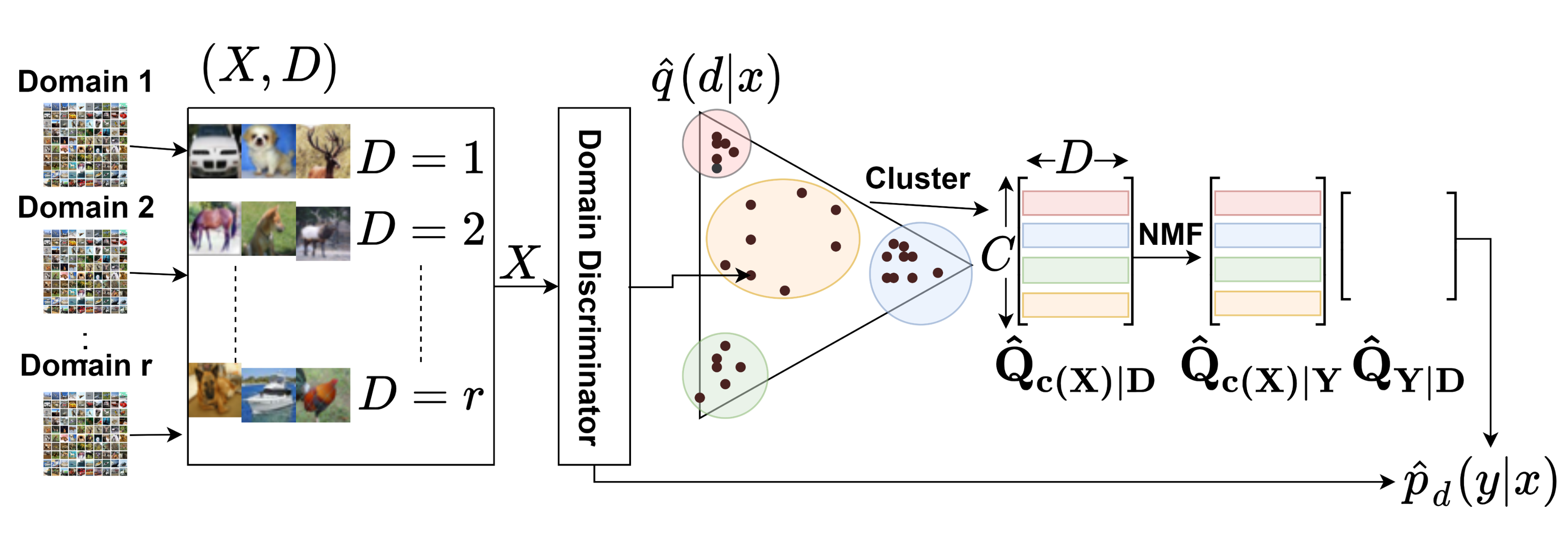Unsupervised Learning under Latent Label Shift
What sorts of structure might enable a learner to discover classes from unlabeled data? Traditional approaches rely on feature-space similarity and heroic assumptions on the data. In this paper, we introduce unsupervised learning under Latent Label Shift (LLS), where we have access to unlabeled data from multiple domains such that the label marginals $p_d(y)$ can shift across domains but the class conditionals $p(\mathbf{x}|y)$ do not. This work instantiates a new principle for identifying classes: elements that shift together group together. For finite input spaces, we establish an isomorphism between LLS and topic modeling: inputs correspond to words, domains to documents, and labels to topics. Addressing continuous data, we prove that when each label's support contains a separable region, analogous to an anchor word, oracle access to $p(d|\mathbf{x})$ suffices to identify $p_d(y)$ and $p_d(y|\mathbf{x})$ up to permutation. Thus motivated, we introduce a practical algorithm that leverages domain-discriminative models as follows: (i) push examples through domain discriminator $p(d|\mathbf{x})$; (ii) discretize the data by clustering examples in $p(d|\mathbf{x})$ space; (iii) perform non-negative matrix factorization on the discrete data; (iv) combine the recovered $p(y|d)$ with the discriminator outputs $p(d|\mathbf{x})$ to compute $p_d(y|x) \; \forall d$. With semi-synthetic experiments, we show that our algorithm can leverage domain information to improve upon competitive unsupervised classification methods. We reveal a failure mode of standard unsupervised classification methods when feature-space similarity does not indicate true groupings, and show empirically that our method better handles this case. Our results establish a deep connection between distribution shift and topic modeling, opening promising lines for future work.
PDF Abstract

 CIFAR-10
CIFAR-10
 ImageNet
ImageNet